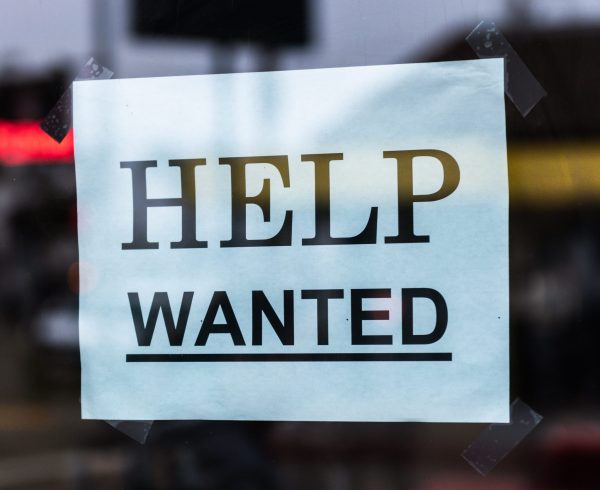This past January, CNN predicted that mental health would be one of the biggest issues of 2021. As we near the end of another unprecedented year, we can all agree that their predictions have proven to be correct. This shouldn’t come as a surprise after months of pandemic stress, natural disasters, political upheavals, and countless other challenges. In fact, it seems like everywhere we look, mental health is being discussed. Whether at the Tokyo Olympics with Simone Biles and other world-class athletes speaking up, or trying to process the aftermath of leaked Facebook documents revealing the known detrimental effects of social media on young people, mental health conversations are increasing in their prevalence and relevance.
Research shows that around 20% of adults have experienced some type of mental illness in their lifetime. One of the most common mental illnesses is depression, which is defined as “extended periods of feeling extremely low that disrupt a person’s ability to enjoy life.” As of 2019, more than 6.5% of people have been diagnosed with depression in the United States. Anxiety is an even more common mental illness, defined as “chronic, exaggerated worrying about everyday events and activities, often accompanied with physical symptoms.” Over 20% of Americans were dealing with anxiety as a mental illness in 2019. And while the data for post-pandemic mental health is still being gathered, we can assume percentages will only continue to increase.
At first blush, business and mental health may seem like they have little to do with each other, but when you take a closer look you’ll see why your company isn’t immune to this conversation. If you take your business as a microcosm of society at large, then you should assume that around 6.5% of your employees have diagnosed depression, and at least 20% are dealing with anxiety of some kind. And whether your company consists of 20 employees or 1,000, the implications of those percentages are significant as you apply them to the real people doing the real work.
Mental health isn’t an isolated issue and unsurprisingly is closely tied to physical health problems such as diabetes and heart disease, sleep issues, and addiction or substance abuse disorders. Those physical problems inevitably decrease employee output as well as increase sick days. What does this mean, practically? The Lancet Journal estimates that depression and anxiety disorders disrupt over $1 trillion of productive output each year. That’s a huge loss of revenue for you and the economy in general.
So knowing the reality of mental health, what can business leaders do?
Acknowledgment
First of all, leadership must recognize what’s going on and that it matters. Rather than continuing forward as if all is well, leaders can be open about this topic and get the conversation started within their own spheres of influence. As leaders, you can strive to model healthy behaviors like having a work/life balance, understanding the importance of holistic health, and normalizing the need for getting help through therapy or counseling. Remember, you set the precedent for your employees. If they see you doing these things, they will be more likely to do them as well.
Prevention
Second, leaders should be consciously working to prevent mental illness in the workplace setting. Over the last two decades, at least 65% of Americans have consistently indicated that their job is the largest source of stress in their lives, whether that’s connected to workload, people issues, juggling work and personal lives, or lack of job security. There are things employers can do, however, to lessen that stress. Being flexible about what, when, and where work is completed is a good place to start. You can also consider modifying company practices like performance reviews to be more supportive and have fewer high stakes. Increase collaboration in your workspaces, and offer support through regular check-ins about your employees’ professional and personal lives.
Provision
Lastly, employers and leaders must make sure to provide access to mental health treatment. Over half of adults with mental illness don’t ever receive treatment, and 11% of people with mental illness can’t afford treatment because they are uninsured. As an employer, you should consider adding mental health treatment to your benefits so that your employees can get the help that they need. Leaders should also offer training for all levels of employees so that they can identify situations where mental health is at play and then do something about it.
Principles In Action
One company stands out as an example of how having business success while caring for employees holistically go hand-in-hand. Since 2002, Unilever has been working to promote mental health wellness for its employees in a supportive, purposeful way. Over the past two decades, this multinational 150,000+ employee company has achieved a work culture that champions mental health support and mental illness prevention. Through COVID-19, their employee engagement has actually increased, and undoubtedly connected to their wellbeing initiatives, 8 out of 10 employees report that they have been able to remain positive and optimistic in their work and personal lives despite the pandemic.
Moving Forward
As we reflect on 2021 and look ahead to what’s next, business leaders must recognize and understand how mental health will continue to affect their companies and progress. As you plan for the next one, five, or even ten years, it’s crucial to consider the impact of mental health on your employees and make a plan to prevent mental illness as much as possible while providing adequate resources for them. Recovering from the uncertainty and trauma of the past undoubtedly won’t be a quick fix, but in the end, by taking steps to acknowledge and prevent mental health issues and provide support if needed, you will have a stronger, more successful company built on the strength and resilience of your employees.







